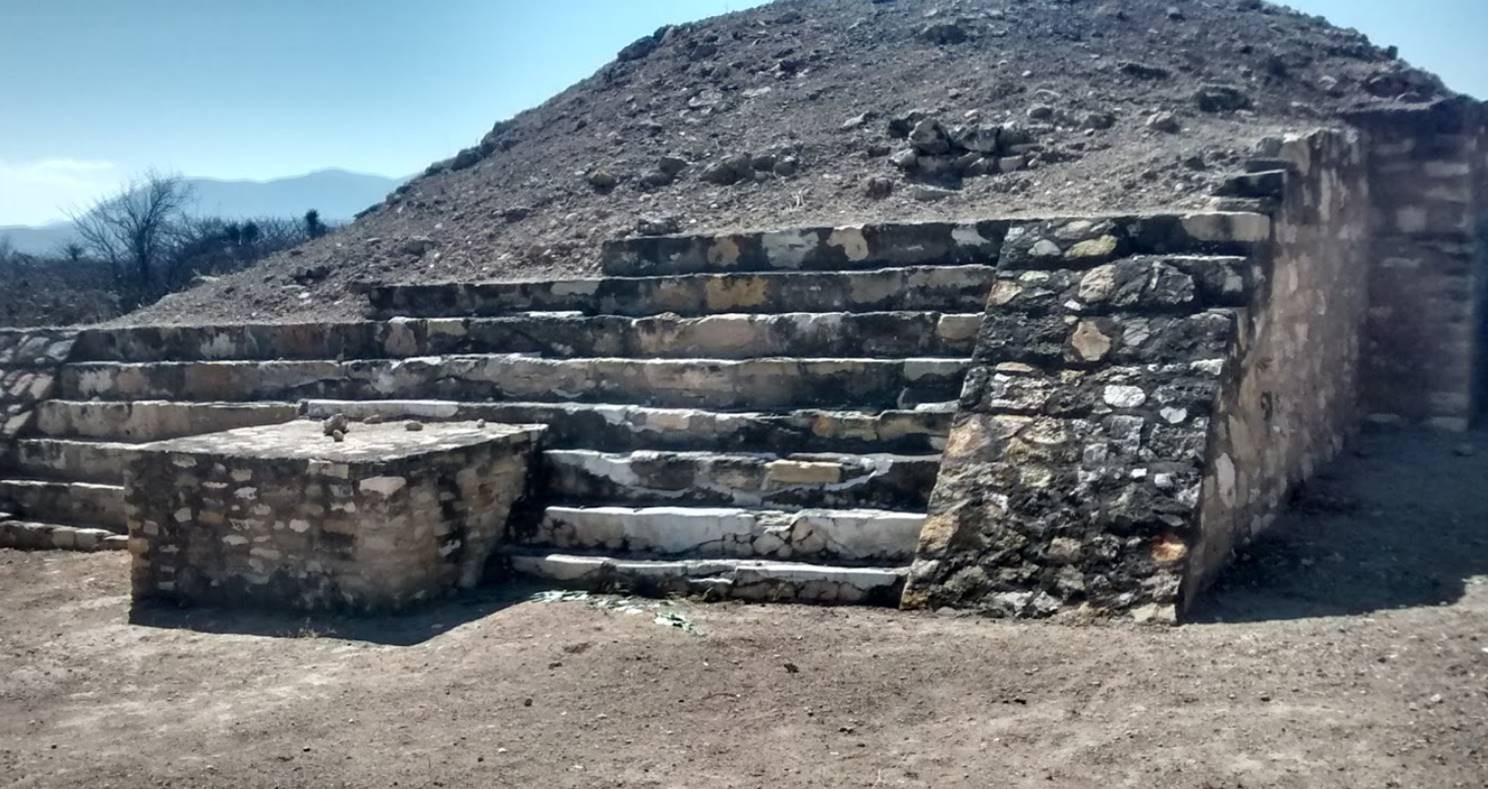The site is important because of its architecture, represented by four building complexes which have been excavated, liberated and consolidated. Pyramidal structures stand out, particularly the great temple or principal pyramid of the Central Complex, as well as one of the structures of Complex I. These display the basic features of Mesoamerican pyramids: the volumes of the pyramidal plinth, stairways lined with balustrades, the remains of temples which stood on top and the remains of floors with flashing located prior to entering the temples. There is also evidence of domestic architecture, notably the palaces associated with the plazas, and these had central patio spaces and dwellings in all four points of the compass; they were accessed via passageways. There is also evidence that drains were laid out from north to south, following the natural slope of the land. Lastly, features have been found that have been identified as rain water receptacles.
Two basic building materials were used: stone and earth, and to a lesser extent sand and lime. These two principal materials were used to build pyramidal plinths, the retaining walls of the various platforms and the foundations of the dwelling complexes or sets. The other materials were used for the floors of the closed spaces, and to smooth the walls of all buildings, and cover them in stucco. The roofs must have been flat, resting on beds of laths or sticks, or pitched roofs could have been built using local perishable materials such as agave stalks (quiote), palm, straw, agave ribs and sotolin (a species of beaucarnea palm native to the region). These latter two materials are still used for the roofs of humble houses in the Popoloca and Chocha regions of the state of Puebla and the north of the state of Oaxaca.
In terms of ceramics there are xantiles: terracotta figures representing the pre-Hispanic gods of Mesoamerica, and certain local deities. Among the best known, we are able to identify: Xochiquetzal, Quetzalcoatl, Tlaloc and Macualxochiltl. There are also polychrome plates from Cholula, while metal is represented by three copper axes. Other materials found in the archeological digs are flint and obsidian knives. Stone and clay skulls representing the dead have also been found.







